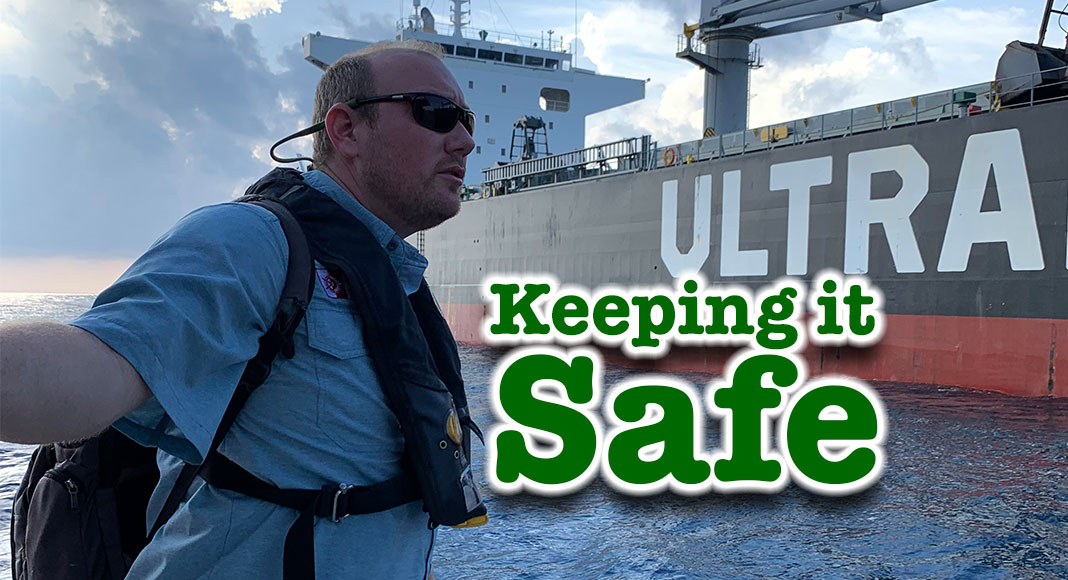
Texas Border Business
On any given day, vessels loaded with cargo appear to effortlessly glide over the deep Gulf Coast waters on their way to the only deepwater seaport on the U.S.- Mexico border led by one of the four Brazos Santiago Pilots Association (BSPA) harbor pilots. Captains Gene R. Tuttle, Chris Urbanovsky, Jonathan P. Willett and Grant S. Wilson are tasked with safeguarding the waterways of the Brownsville Navigation District and Port Isabel-San Benito Navigation District while guiding vessels in and out of the 17-mile long Brownsville Ship Channel with unmatched knowledge and expertise.
Since its grand opening in 1936, vessels from around the world have called upon the Port of Brownsville to deliver essential goods supporting a wide range of industries throughout North America. Eighty five years later the port continues to be the leading economic driver of the Rio Grande Valley. In 2020, despite the economic challenges brought by a world-wide pandemic, the port recorded a banner year with a record-setting 11.6 million short tons of cargo moved through the port’s terminals.
“We are an essential part of keeping products moving through the Port of Brownsville, keeping the steel mills in Mexico going, keeping up the fuel supply. Every day that the channel is shut down and traffic isn’t moving it’s a huge cost to the customer and the economy,” BSPA presiding officer Captain Willett said.
Steel is a large and significant mainstay in Brownsville, where the port is the major gateway for steel into Mexico, moving more than three million short tons of steel commodities per year. The port is also a major transshipment center for liquid products like premium gasoline, diesel, jet fuels and lubricants, before being transported to final destinations across the border.
The entrance and exit of vessels in the ship channel must be carefully choreographed to accommodate the ebb and flow of industrial activity at the port with safety as the highest priority. Harbor pilots are on call to coordinate with the Port of Brownsville’s Harbor Master’s Office and arrange the pilot’s boarding instructions. Before entering the Brownsville Ship Channel, vessels must standby at the Brazos Santiago Sea buoy located approximately three miles off the jetties to await a pilot’s boarding.
“This could be in all hours of the day, in rain or cold, we’re on call 24 hours a day, seven days a week, 365 days a year, ships don’t keep a schedule,” said Willett. “The most dangerous part of transit for a vessel is entering or leaving a port, a big part of the pilot’s job is making the captain feel comfortable in a port they’ve never been in. This is what we are trained for.”
The pilot boat operator meets the vessel at the buoy and aligns the pilot boat alongside the vessel so that the pilot can climb aboard. Securing their hands to the rope as they quickly scale the rope ladder, the pilot makes its way to the bridge of a ship up flights of stairs and guides the bridge team to safely enter the channel and dock the ship.
Over the last year the port community, tugboat operators and harbor pilots adapted operations to prevent the spread of COVID.
“Everyone did a great job keeping this port moving. We put protocols in place to try to protect our pilots, change our operations and distanced from one another to avoid losing a whole watch. We are a small group with two pilots on watch at all times,” Willett said.
As the Port of Brownsville continues to grow, Willett estimates the number of pilots serving the area will increase. He hopes the next generation of harbor pilots will be homegrown.
“The future of the Port of Brownsville is bright, as waterway traffic increases, we will be there to meet the challenge and train more pilots as needed,” Willett said.











